| Coach | NA |
| Venue | Leuna Chemie Stadion |
Hallescher FC Trivia
Hallescher FC predictions
Predictions for Hallescher FC: See upcoming and historic predictions for Hallescher FC below.
Disclaimer: Past performance does not guarantee future results. Betting involves risk; only wager what you can afford to lose. Always gamble responsibly.
Hallescher FC Opinions
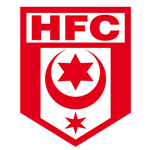 Who is the greatest Hallescher FC player of all time?
Who is the greatest Hallescher FC player of all time?
Hallescher FC latest results
| 13/04 | - | ||
| 07/04 | 0 - 2 | ||
| 30/03 | 2 - 0 | ||
| 16/03 | 2 - 2 | ||
| 02/03 | 1 - 0 |
3. Liga standings
| Rank | Team | MP | W | D | L | GF | GA | GD | Pts |
|---|---|---|---|---|---|---|---|---|---|
| 1 |
 Jahn Regensburg
Jahn Regensburg
|
32 | 17 | 9 | 6 | 47 | 34 | 13 | 60 |
| 2 |
 SSV ULM 1846
SSV ULM 1846
|
31 | 16 | 8 | 7 | 50 | 34 | 16 | 56 |
| 3 |
 Preussen Munster
Preussen Munster
|
32 | 15 | 10 | 7 | 55 | 41 | 14 | 55 |
| 4 |
 Dynamo Dresden
Dynamo Dresden
|
31 | 17 | 3 | 11 | 49 | 31 | 18 | 54 |
| 5 |
 SV Sandhausen
SV Sandhausen
|
32 | 14 | 10 | 8 | 50 | 43 | 7 | 52 |
| 6 |
 Erzgebirge AUE
Erzgebirge AUE
|
32 | 13 | 10 | 9 | 41 | 39 | 2 | 49 |
| 7 |
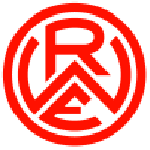 Rot-weiss Essen
Rot-weiss Essen
|
30 | 14 | 5 | 11 | 45 | 44 | 1 | 47 |
| 8 |
 SpVgg Unterhaching
SpVgg Unterhaching
|
31 | 13 | 7 | 11 | 40 | 40 | 0 | 46 |
| 9 |
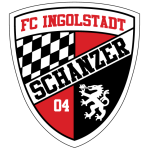 FC Ingolstadt 04
FC Ingolstadt 04
|
32 | 12 | 9 | 11 | 54 | 43 | 11 | 45 |
| 10 |
 Borussia Dortmund II
Borussia Dortmund II
|
32 | 12 | 9 | 11 | 46 | 46 | 0 | 45 |
| 11 |
 FC Saarbrücken
FC Saarbrücken
|
29 | 10 | 13 | 6 | 45 | 32 | 13 | 43 |
| 12 |
 Verl
Verl
|
32 | 11 | 10 | 11 | 50 | 49 | 1 | 43 |
| 13 |
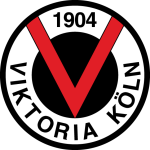 FC Viktoria Koln
FC Viktoria Koln
|
32 | 11 | 9 | 12 | 49 | 54 | -5 | 42 |
| 14 |
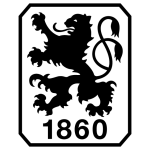 TSV 1860 Munich
TSV 1860 Munich
|
32 | 12 | 5 | 15 | 36 | 34 | 2 | 41 |
| 15 |
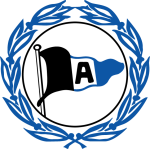 Arminia Bielefeld
Arminia Bielefeld
|
32 | 9 | 10 | 13 | 43 | 44 | -1 | 37 |
| 16 |
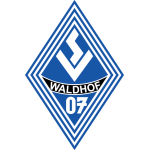 Waldhof Mannheim
Waldhof Mannheim
|
32 | 10 | 7 | 15 | 44 | 51 | -7 | 37 |
| 17 |
 Hallescher FC
Hallescher FC
|
31 | 9 | 5 | 17 | 45 | 60 | -15 | 32 |
| 18 |
 MSV Duisburg
MSV Duisburg
|
31 | 7 | 8 | 16 | 31 | 46 | -15 | 29 |
| 19 |
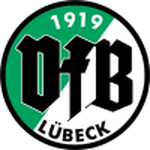 VfB Lubeck
VfB Lubeck
|
32 | 5 | 12 | 15 | 27 | 56 | -29 | 27 |
| 20 |
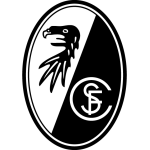 Freiburg II
Freiburg II
|
32 | 6 | 5 | 21 | 30 | 56 | -26 | 23 |
About Hallescher FC
Hallescher FC is a professional football club based in Halle, Saxony-Anhalt, Germany. Founded in 1946, the club has a rich history that spans over seven decades, making it one of the oldest football clubs in the country.
The club's roots can be traced back to 1900 when Hallescher Fussball-Club Wacker was established. However, the current entity, Hallescher FC, was formed after World War II due to the re-organization of sports and football clubs in East Germany. The club was initially known as SG Halle-Glaucha and underwent several name changes before finally settling on Hallescher FC in 1966.
Throughout its history, Hallescher FC has experienced a roller coaster of successes and struggles. The club enjoyed its golden era in the 1950s and 1960s when it was a dominant force in East German football. It won the East German Cup, known as the FDGB-Pokal, in 1956 and 1962, and was a regular participant in the top-tier DDR-Oberliga.
However, the club's fortunes took a turn for the worse after the reunification of Germany. It faced financial difficulties and was relegated to the lower tiers of German football. Despite these challenges, Hallescher FC never lost its fighting spirit and gradually climbed back up the ranks.
In the 2011-2012 season, the club achieved promotion to the 3. Liga, the third tier of German football, where it has been competing ever since. This marked a significant milestone in the club's recent history, signaling its return to professional football after nearly two decades.
Hallescher FC's home ground is the Erdgas Sportpark, a modern stadium with a seating capacity of over 15,000. The club's fans are known for their passionate support and loyalty, with a dedicated fan base that follows the team through thick and thin.
The club's traditional colors are red and white, and its emblem features a stylized version of the double-headed eagle, a symbol of the city of Halle. Over the years, Hallescher FC has nurtured several talented players who have gone on to have successful careers in professional football.
While Hallescher FC may not be as globally renowned as some of Germany's football giants, it holds a special place in the hearts of its fans and the local community. The club's resilience, determination, and commitment to its roots are what make it a unique and cherished part of German football history.















